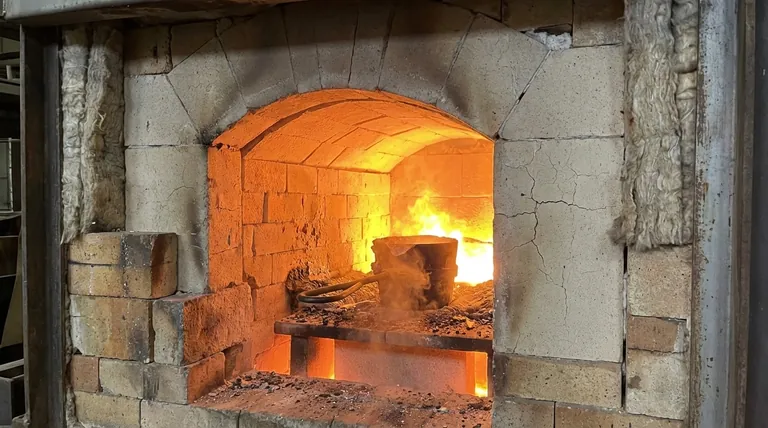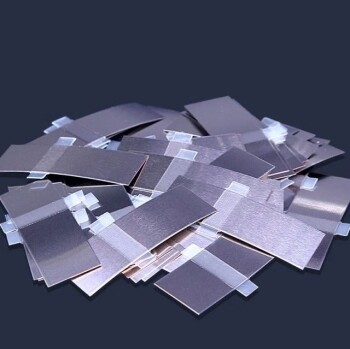At their core, refractory materials are engineered to withstand extreme temperatures, chemical attack, and physical wear in high-heat industrial processes. Their principal advantage is this profound thermal stability, allowing industries like steel, glass, and cement to operate at temperatures that would destroy most other materials. However, this high-performance capability is invariably balanced against inherent disadvantages in mechanical properties and cost.
The essential value of refractories lies in their ability to contain heat and resist thermal degradation. The key challenge is selecting a specific refractory whose chemical and mechanical limitations are acceptable for a given industrial environment and budget.

The Core Advantage: Unmatched Thermal Performance
The primary reason for using refractory materials is their ability to perform reliably under conditions of extreme heat. This performance is built on a few key properties.
High Melting and Service Temperatures
Refractories are defined by their high melting points, typically above 1,580°C (2,876°F). This allows them to form the structural lining of furnaces, kilns, and reactors, containing processes that operate at temperatures far beyond the limits of metals.
Low Thermal Conductivity
Many refractories act as excellent insulators. By resisting the flow of heat, they keep energy contained within a process, which dramatically improves energy efficiency and protects the external structure of the equipment from heat damage.
Thermal Shock Resistance
Industrial processes often involve rapid heating and cooling cycles. Refractories are engineered to withstand the internal stresses caused by this thermal expansion and contraction without cracking, a property known as thermal shock resistance.
The Inherent Disadvantages and Limitations
While thermally robust, no refractory is perfect. Their advantages in heat resistance come with significant drawbacks that must be understood and managed.
Mechanical Brittleness
Unlike ductile metals that bend under stress, refractories are typically ceramic-based and therefore brittle. They are susceptible to cracking and failure from mechanical impact, vibration, or excessive structural loads, especially at lower temperatures.
Chemical Susceptibility
Refractories are not universally inert. They are classified as acidic, basic, or neutral. Using a chemically incompatible refractory will lead to rapid degradation. For example, an acidic refractory like silica brick will be quickly destroyed by a basic slag environment common in steelmaking.
Porosity and Permeation
Most refractory products have a degree of porosity. While controlled porosity can improve thermal shock resistance, it also creates a pathway for molten metal, slag, or hot gases to penetrate the material, leading to internal corrosion and weakening over time.
High Cost and Complex Installation
High-purity raw materials and the energy-intensive manufacturing processes make high-performance refractories expensive. Furthermore, installing a refractory lining is a specialized skill requiring careful bricklaying or casting to ensure joint integrity and prevent premature failure.
Understanding the Trade-offs: The "No Perfect Refractory" Principle
Selecting a refractory is an exercise in balancing competing properties. Improving one characteristic often means sacrificing another.
Thermal Insulation vs. Mechanical Strength
Materials with the best insulating properties, like insulating firebricks or ceramic fibers, are often highly porous and have low mechanical strength. In contrast, dense, strong refractories like high-alumina castables offer poor insulation.
Chemical Purity vs. Cost
The most chemically resistant refractories are made from high-purity synthetic materials like tabular alumina, fused zirconia, or silicon carbide. This purity comes at a significant cost premium compared to more common refractories made from natural clays.
Porosity vs. Corrosion Resistance
A refractory with low porosity will be denser and stronger, offering superior resistance to slag or liquid metal penetration. However, this same dense structure typically has poorer thermal shock resistance compared to a more porous equivalent.
Making the Right Choice for Your Application
The optimal refractory is not the one with the highest performance in every category, but the one best suited for the specific demands and budget of the process.
- If your primary focus is maximum temperature resistance and insulation: Prioritize materials like high-alumina bricks or ceramic fiber blankets, but be prepared for higher costs and careful handling to avoid mechanical damage.
- If your primary focus is resistance to chemical attack (e.g., basic slag): Select a chemically compatible refractory like magnesia-carbon, even if it has a higher thermal conductivity than other options.
- If your primary focus is surviving rapid heating and cooling cycles: Look for materials specifically designed for thermal shock resistance, such as certain fused silica or silicon carbide products, accepting potential compromises in other areas.
- If your primary focus is cost-effectiveness for general-purpose heat containment: Standard fireclay or alumina-silica refractories offer a balanced and economical solution for less demanding applications.
Ultimately, choosing the correct refractory is a strategic engineering decision that balances thermal demands, chemical environment, and economic realities.
Summary Table:
| Aspect | Advantages | Disadvantages |
|---|---|---|
| Thermal Performance | High melting point, low thermal conductivity, excellent thermal shock resistance | - |
| Mechanical Properties | - | Brittle, susceptible to cracking from impact or vibration |
| Chemical Resistance | Excellent when chemically compatible with the process environment | Rapid degradation if chemically incompatible (acidic, basic, neutral) |
| Cost & Installation | Enables high-temperature industrial processes | High material cost and requires specialized, complex installation |
| Structure | Controlled porosity can improve thermal shock resistance | Porosity can allow penetration by molten materials, leading to corrosion |
Struggling to select the right refractory material for your furnace, kiln, or reactor? The trade-offs between heat resistance, mechanical strength, chemical compatibility, and cost are complex. KINTEK specializes in high-performance lab equipment and consumables, serving the precise needs of laboratories and R&D facilities. Our experts can help you navigate these challenges to find the optimal solution that maximizes your process efficiency and longevity. Contact our specialists today for a personalized consultation!
Visual Guide

Related Products
- High-Purity Titanium Foil and Sheet for Industrial Applications
- 1400℃ Laboratory High Temperature Tube Furnace with Alumina Tube
- Laboratory Muffle Oven Furnace Bottom Lifting Muffle Furnace
- High Temperature Muffle Oven Furnace for Laboratory Debinding and Pre Sintering
- 1800℃ Muffle Oven Furnace for Laboratory
People Also Ask
- Why is platinum unreactive? The Atomic Secrets Behind Its Remarkable Stability
- How can you improve corrosion resistance? Extend Equipment Life with Proven Strategies
- How does hardness change with temperature? Understand the Inverse Relationship to Prevent Failure
- What is titanium used for in manufacturing? Leveraging High-Performance Properties for Critical Applications
- What are the disadvantages of using metal? Understanding Corrosion, Weight, and Cost Challenges



















